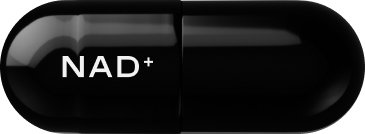

Beyond Birthdays: Understanding Your Epigenetic Age via Buccal Swab Samples
While chronological age simply marks the years since birth, a more profound measure of vitality exists: epigenetic age predicted by a next-generation epigenetic aging clock. This metric reflects how your body is aging at a cellular level and serves as an indicator of biological age. The disparity between chronological and biological age highlights why some individuals "age better," underscoring the need for careful biological measurements that provide insights into how well a person is aging. Fortunately, advancements in epigenetics now offer powerful tools to measure this dynamic, modifiable epigenetic age, empowering proactive steps to enhance healthspan collected with a simple mouth swab—no blood collection required.
What is Epigenetic Age?

The measurement of epigenetic age is made possible thanks to epigenetics, the study of how gene expression is regulated without altering the underlying DNA sequence. Think of DNA as your cellular hardware, and the epigenome as the software, dictating which genes are active or dormant. DNA methylation, a key epigenetic modification, involves chemical tags on DNA that change predictably over time, influenced by lifestyle and environment.
Scientists use these dynamic methylation patterns to create "epigenetic clocks." While early "first-generation" clocks primarily predicted chronological age, "next-generation" clocks are far more sophisticated. These advanced models correlate with actual health outcomes, disease risks, lifestyle factors, and even mortality, offering a more comprehensive view of biological vitality. Epigenetic clocks can serve as powerful biomarkers, integrating genetic predispositions with lifetime environmental exposures. They’re highly relevant to the primary aging hallmark “epigenetic alterations”, which is thought to underlie and contribute to more systemic hallmarks.
The Buccal Cheek Swab Advantage: A Painless Path to Epigenetic Insights

A buccal swab is a non-invasive DNA collection method that uses a cheek swab to collect DNA samples from the mouth. Buccal swab samples are widely used in genetic testing and DNA analysis, providing a simple alternative to blood collection for both at-home testing and patients. The swab is rubbed along the inside of the cheek, placed in a tube with a cap, and sent for DNA testing to study genes for research, prevention, or medicine purposes.
For epigenetic analysis, the buccal swab offers a painless, user-friendly DNA collection method. Its primary appeal is its non-invasive and comfortable nature; a gentle swipe of the mouth in the inner cheek replaces traditional blood draws, making it ideal for all ages and for convenient at-home collection.
Despite its simplicity, buccal swabbing yields high-quality DNA with abundant nuclear cells, essential for rigorous epigenetic analysis. Collected DNA also remains remarkably stable at room temperature, simplifying transport to laboratories. Crucially, the accuracy of epigenetic age from buccal samples depends on using a clock specifically developed and validated for buccal tissue. Using a blood-trained clock with oral tissue can lead to significant inaccuracies. The buccal swab's convenience and DNA stability also make it uniquely suited for repeated, long-term monitoring, allowing individuals to track the real-time impact of their lifestyle choices on their epigenetic age.
Introducing Tally Health and the TallyAge Test: Your Personalized Longevity Compass
Tally Health leads in personalized longevity, committed to scientific rigor and innovation. Their flagship offering, the TallyAge Test, utilizes a buccal swab to determine your epigenetic age. No painful blood draw or tediously filling a tube with saliva. The TallyAge Test uses a buccal swab sample collected from the inside of your cheek for analysis — quick, painless and deeply insightful!
This cutting-edge test measures hundreds of thousands of DNA methylation patterns, providing a precise snapshot of how your cells are aging and insights into the biological processes linked to the 12 Hallmarks of Aging.
The TallyAge Test is inspired by Tally Health's proprietary "CheekAge" clock, a next-generation epigenetic clock developed specifically for buccal tissue. This specialized development ensures tissue-specific accuracy. CheekAge was trained on an unprecedented dataset of over 8,000 diverse adult buccal DNA samples, spanning ages 18-100 years, ensuring broad generalizability. It analyzes over 200,000 DNA methylation sites, offering a comprehensive view of your epigenetic landscape.
Critically, CheekAge is designed to correlate with various lifestyle factors—including diet, exercise, sleep, stress, smoking, alcohol, and BMI—and has demonstrated a significant association with mortality risk in longitudinal data, comparable to highly regarded blood-trained clocks. Its scientific foundation, including its predictive power for mortality in older adults tracked over time, has been validated in peer-reviewed publications. This direct link to modifiable behaviors allows Tally Health to provide personalized action plans, offering a clear pathway for improvement.
Translating Your TallyAge: Insights for a Healthier You

Your TallyAge results empower you to manage your health proactively. Epigenetic age is dynamic and modifiable; daily choices measurably impact cellular health and aging. The TallyAge score provides quantifiable feedback, linking your behaviors directly to your epigenetic aging rate— just from a simple cheek swab sample.
While TallyAge can fluctuate due to temporary events like infections or stress, the true value lies in tracking progress over time. Tally Health recommends re-testing every six months to establish reliable trends and observe the positive impact of sustained lifestyle changes. Temporary increases in epigenetic age are often reversible, highlighting the body's resilience.
Beyond the Test: Tally Health's Holistic Approach to Wellness

Tally Health offers a comprehensive ecosystem to support your longevity journey, integrating science with actionable wellness strategies. This includes a range of science-backed longevity supplements, meticulously formulated to target the core Hallmarks of Aging.
For instance, Tally Health's Vitality supplement combines five key ingredients: Calcium alpha-ketoglutarate (AKG), quercetin, trans-resveratrol, fisetin, and spermidine. These compounds are chosen for their scientifically supported impact on aging pathways, addressing inflammaging, cellular senescence, mitochondrial efficiency, and autophagy in experimental studies, thereby supporting overall energy and cellular function.
Tally Health's supplements adhere to rigorous criteria: demonstrated safety and tolerability in human clinical trials for each ingredient, strong mechanistic evidence targeting hallmarks of aging in experimental data, and peer-reviewed data showing longevity benefits in small mammals. This commitment to "science first" reflects a maturing biohacking movement, prioritizing validated, data-driven, and personalized strategies for reliable and safer outcomes.
The Future of Personalized Longevity: Empowering Proactive Health

Epigenetic testing, especially through accessible methods like the buccal swab, is transforming healthcare from reactive "sick care" to proactive "health optimization". Epigenetic clocks can be valuable aging biomarkers that help individuals better understand their overall aging. Integrating multi-dimensional data, such as epigenetic information with gut microbiota or metabolomics, promises increasingly precise and individualized recommendations.
The future of personalized longevity also demands integrating sex-specific differences in aging. Men and women age distinctly, with variations in longevity, disease risk, and responses to interventions. Tally Health's diverse dataset and the ability of epigenetic clocks to identify sex-specific differences position them to contribute to equitable and effective health strategies.
The rapid advancements in epigenetics and aging research continue to deepen our understanding, leading to more precise predictions and innovative interventions. Tools like the TallyAge Test empower individuals to actively shape their healthspan, focusing on extending not just years, but vibrant, healthy life to those years.
What is a buccal swab?
A buccal swab is a simple, non-invasive method of collecting DNA by gently rubbing the inside of the cheek with a cotton-like swab. It’s widely used in genetic and epigenetic testing because it provides abundant, high-quality DNA without the need for a blood draw. The collected DNA is stable at room temperature and well-suited for at-home testing and long-term health monitoring.
What is epigenetic age?
Epigenetic age is a measure of how your body is aging at a cellular level, based on DNA methylation patterns that change over time due to lifestyle and environment. Unlike chronological age, epigenetic age reflects biological vitality and can predict health outcomes, disease risk, and even mortality.
What is a buccal swab used for in epigenetic testing?
A buccal swab is a non-invasive DNA collection method that uses a cheek swab to gather DNA samples from the mouth. For epigenetic testing, buccal swabs provide high-quality DNA with abundant nuclear cells, remain stable at room temperature, and allow for painless, at-home collection—making them ideal for tracking epigenetic age over time.
Recommended Supplements
Citations
Seale et al. Making sense of the ageing methylome. Nat Rev Genet 2022; https://doi.org/10.1038/s41576-022-00477-6
Bell et al. DNA methylation aging clocks: challenges and recommendations. Genome Biol 2019; https://doi.org/10.1186/s13059-019-1824-y
Johnson and Shokhirev. First-generation versus next-generation epigenetic aging clocks: Differences in performance and utility. Biogerontology 2025; https://doi.org/10.1007/s10522-025-10265-4
Shokhirev and Johnson. Various diseases and conditions are strongly associated with the next-generation epigenetic aging clock CheekAge. Geroscience 2025; https://doi.org/10.1007/s11357-025-01579-9
Shokhirev et al. CheekAge, a next-generation epigenetic buccal clock, is predictive of mortality in human blood. Frontiers in Aging 2024; https://doi.org/10.3389/fragi.2024.1460360
Shokhirev et al. CheekAge: a next-generation buccal epigenetic aging clock associated with lifestyle and health. Geroscience 2024; https://doi.org/10.1007/s11357-024-01094-3
Levine. Assessment of Epigenetic Clocks as Biomarkers of Aging in Basic and Population Research. J Gerontol A Biol Sci Med Sci 2020. https://doi.org/10.1093/gerona/glaa021
Johnson et al. A set of common buccal CpGs that predict epigenetic age and associate with lifespan-regulating genes. iScience 2022; https://doi.org/10.1016/j.isci.2022.105304
Lowe et al. Buccals are likely to be a more informative surrogate tissue than blood for epigenome-wide association studies. Epigenetics 2013; https://doi.org/10.4161/epi.24362











